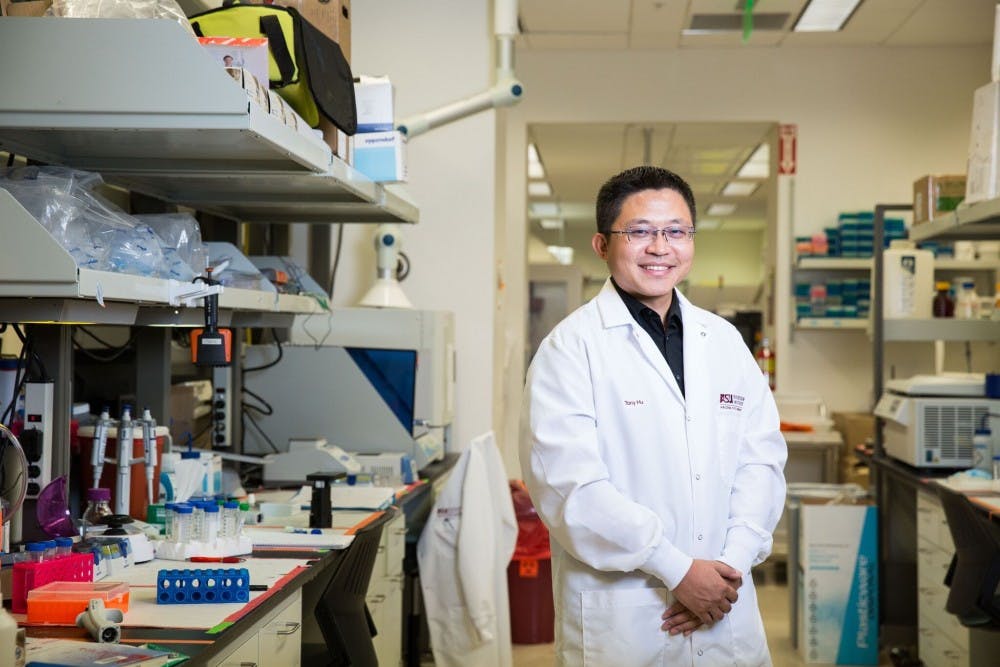Inspired by the low five-year survival rate for patients with pancreatic cancer, ASU researchers have developed a new method for detecting oxygen deprivation levels in cancer patients.
Pancreatic cancer’s five-year survival rate is around 8 percent according to the Hirshberg Foundation for Pancreatic Cancer Research.
Carlo Maley, an associate professor in the School of Life Sciences and director of the Arizona Cancer Evolution Center, said that pancreatic cancer is a particularly difficult cancer to treat.
“If it’s early in the process it can just be cut out, but if it's late in the process it's already metastasized to the parts of the body," Maley said. "Then you have to use some kind of systemic therapy like chemotherapy, and pancreatic cancer cells seem to not be responsive to most cancer therapy.”
Yang Liu, a postdoctoral research associate in the Virginia G. Piper Center for Personalized Diagnostics, said that hypoxia, a condition in which the arteries have a low oxygen concentration of blood, can impact pancreatic cancer patients chances of survival.
“Tumor hypoxia, a condition in which the tumor tissue is deprived of adequate oxygen, is one of the most significant biochemical and pathophysiological changes that occurs in the tumor,” Liu said.
Because of this, Tony Hu, an associate professor in the School of Biological and Health Systems Engineering, and his team are developing new methods to detect hypoxia in pancreatic cancer patients.
Their method consists of following the chain of chemical reactions that hypoxia sets into motion by measuring the levels of certain chemicals in a patient's blood to see how hypoxic a patient is.
He said there are a lot of studies being done on the connections between tumor hypoxia and cancer prognosis because the higher level of hypoxia, the more difficult the tumor will likely be to treat.
"It's very important to know the hypoxia levels before a clinician starts any surgery or treatment," Hu said. "It is really difficult to profile (the markers) because the lifetime ... is so short ... no one can accurately profile it."
Liu said the most trusted method for assessing tumor hypoxia is "highly invasive," but it is more reliable than less invasive methods which are "not suitable for routine clinical use due to regulatory restraints, safety concerns and/or their uncertain correlations with prognosis.”
Because of the toll that some of these tests can take on cancer patients, Hu and his team wanted to develop a method that is as minimally invasive as possible.
For their test, all the researchers need is a small sample of a patient's blood. The team is collaborating with the University of Texas MD Anderson Cancer Center to test blood samples of patients with pancreatic cancer.
Through doing so, the researchers have been able to successfully trace the domino-effect of chemical reactions to profile the level of hypoxia.
Liu also said the work they are doing can help clinicians develop more personalized treatment methods for cancer patients.
"Our study ... could be used to guide individualized therapy to optimize treatment plans," Liu said
Because pancreatic cancer kills about 80 percent of the patients who are diagnosed, methods like this which help patients and clinicians understand a cancer prognosis can help improve a patient's quality of life and treatment option.
Reach the reporter at nesherwo@asu.edu or follow @thecolesherwood on Twitter.
Like The State Press on Facebook and follow @statepress on Twitter.




